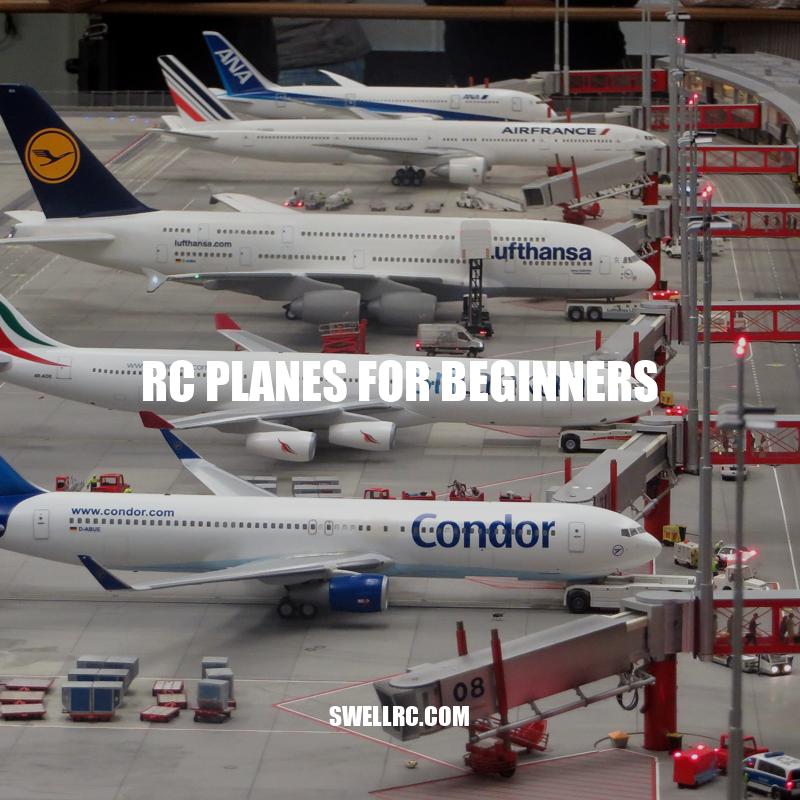Beginner’s Guide to RC Planes: Tips for Choosing, Flying, Maintaining and Staying Safe
Radio-controlled (RC) planes offer an exciting and exhilarating experience for aviation enthusiasts. Regardless of age or skill level, flying RC planes can provide a lifetime of enjoyment. For beginners, getting started with RC planes can be a bit daunting, but with the right guidance and some practice, it is a hobby that anyone can master. In this guide, we’ll explore everything you need to know about RC planes for beginners. From choosing the right kind of plane to tips on learning how to fly, handling maintenance, and following safety guidelines – this guide covers all the basics and will help you get started on your journey of RC aviation. Whether you are a young hobbyist looking to take your first flight or an adult looking to fulfill your childhood dream, this guide will provide you with the necessary knowledge and resources to become a successful RC pilot. So fasten your seatbelts, hold on tight, and let’s take off into the exciting world of RC planes!
Choosing the Right RC Plane
Before getting started with RC planes for beginners, it’s essential to choose the right plane for your skill level and preferences. It can be confusing to navigate the various options available, but some factors to consider are:
- Design: RC planes come in various designs, from basic gliders to complex models of real aircraft. A basic trainer plane is best for beginners, as it is easy to fly and has a stable flight.
- Wing Design: There are two types of wing designs: high-wing and low-wing. High-wing planes are more stable and easier to fly, while low-wing planes are more agile and better suited for experienced pilots.
- Flight Controller: A flight controller is a device that controls the flight of the plane, and it’s essential to choose one that is suitable for your skill level.
- Power Source: RC planes can be powered by electric or gas engines. Electric planes are more environmentally friendly and easier to maintain, while gas planes are more powerful and have a longer range.
Websites like HorizonHobby.com and TowerHobbies.com offer a wide range of RC planes and accessories suitable for beginners. You can also visit local hobby shops or attend RC plane events to gain insight and advice from experienced pilots. Before purchasing, read reviews and check the authenticity and reliability of the seller. Once you have selected your plane, it’s time to move on to the next step: learning how to fly.
How do I choose the right motor for my RC plane?
Choosing the right motor for your RC plane depends on several factors such as the size and weight of the aircraft, the desired performance, and the battery used. Here are some tips to help you select the right motor:
- Check the weight of your aircraft, and choose a motor that can handle that weight. Selecting a motor with too little power will result in poor performance, while a motor with too much power can be heavy and overkill.
- Determine the size and type of propeller you will be using. This will help in selecting the appropriate motor size and motor speed.
- Consider the type of plane you are building. Different planes require different types of motors, such as brushless, brushed, outrunner, or inrunner motors.
- Check the battery voltage, and select a motor that can handle that voltage. Motors are typically rated for a specific voltage range.
- Consider your flying style. If you like to perform aerial acrobatics or fly at high speeds, choose a motor with a high power-to-weight ratio. For casual flying, a lower power-to-weight ratio motor may be sufficient.
There are many online resources that can help you select the right motor for your RC plane, such as RC Groups, HobbyKing, and Motion RC. These websites offer motor selection guides and forums where you can ask for advice from experienced RC modelers. Additionally, they offer a vast assortment of motors that cater to different flying styles and plane models, which will make the selection process easier.
Learning to Fly RC Planes
Flying an RC plane requires practice, patience, and a positive attitude. Here are some tips to get you started:
- Practice on a simulator: A flight simulator helps you get a feel for flying without risking damage to your plane. The software simulates various weather conditions and lets you practice takeoff, flight, and landing.
- Find an open field: Choose a location with a smooth and flat terrain, minimal distractions, and few obstacles.
- Learn the basics: Start with understanding the controls of the plane, such as throttle, rudder, ailerons and elevator.
- Practice takeoff and landing: These are the most critical aspects of flying an RC plane. Practice slowly and gradually increase speed and altitude.
- Join a club: Joining a local RC plane club can help you learn from experienced pilots, share ideas, and gain access to flight facilities and events.
Did you know that the world’s largest RC plane has a wingspan of over 40 feet, weighs over 700 pounds, and can fly at speeds of up to 250 mph? While such planes are not suitable for beginners, they serve as a testament to the endless possibilities of the hobby.
RC Planes for Beginners – Comparison Table
| Planes | Type | Wing Design | Power Source | Price Range |
|---|---|---|---|---|
| Super Cub S RTF | Trainer Plane | High-wing | Electric | $150-$200 |
| Force 1 Velocity | Stunt Plane | Low-wing | Electric | $50-$100 |
| Piper J-3 Cub | Scale Model | High-wing | Electric | $100-$150 |
Websites like Amazon and BestBuy offer a wide range of RC planes for beginners at various price ranges. Do your research, read reviews, and choose a plane that suits your budget, skill level, and preferences. Remember, learning to fly an RC plane is a journey, not a race. Enjoy the process, be patient, and have fun along the way.
How do you learn to fly an RC plane?
Learning to fly an RC plane can be an exciting hobby for people of all ages. Here are the steps you can follow to get started:
1. Get an RC plane: You can buy an RC plane from hobby stores or online marketplaces such as Amazon, HobbyKing, and HorizonHobby. There are different types of RC planes available based on skill levels, so choose wisely.
2. Practice with an RC simulator: Before taking off, it’s best to practice flying an RC plane on an RC simulator such as RealFlight or Phoenix RC, which can help you learn the basics of controlling an RC plane and navigating common obstacles.
3. Find a safe place to fly: Once you’ve got the hang of the controls, find a safe place to fly your RC plane, such as a large open field or a dedicated RC flying club. Avoid flying near populated areas, airports, or wildlife.
4. Learn to fly with the help of an experienced pilot: Joining an RC flying club can be useful in connecting with experienced pilots who can teach you to fly. You can also reach out to RC communities and forums where you can seek advice and learn from other pilots.
5. Practice, Practice, Practice: Learning to fly an RC plane takes time and dedication, so practice regularly and keep trying even if you fail. With time, you will get better at flying and can even try advanced maneuvers like loops and rolls.
Overall, by following these steps, you can learn to master the art of flying an RC plane.
Conclusion
In conclusion, flying an RC plane is a fun and rewarding hobby that requires dedication, practice, and a positive attitude. As a beginner, choosing the right plane, learning the basics, and following safety guidelines are crucial for a successful flight. With practice, you can progress to advanced maneuvers and even compete in RC plane tournaments. Whether you want to fly for leisure or competitive purposes, it’s important to enjoy the process and not get discouraged by setbacks. Joining an RC plane club or online community can help you connect with like-minded enthusiasts, learn new skills, and stay up-to-date with the latest trends and technology.
Remember to choose a beginner-friendly plane, practice on a simulator or open field, and learn from experienced pilots. With these tips, you’ll be on your way to experiencing the thrill of soaring high in the skies.



